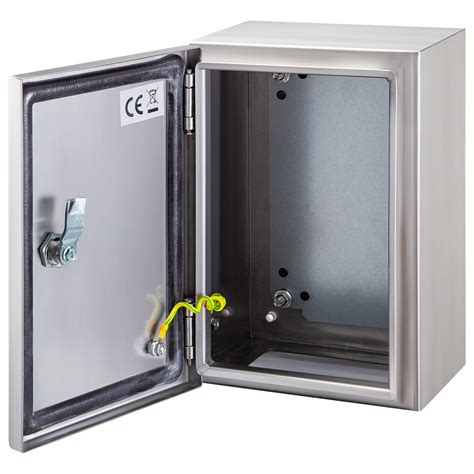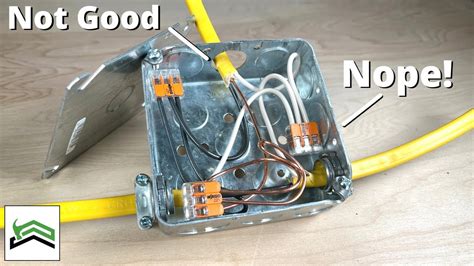blue electrical box vs metal In use for far longer than PVC versions, metal electrical boxes are super-strong, fireproof, and incapable of melting. They offer the greatest level of security for electrical wiring applications. It's also virtually impossible to crush .
Twisted Metalworx was established by two U.S. Navy veterans with nearly 30 years of combined military service. After leaving the service, they decided to take their extensive knowledge of aviation structural systems and apply it to manufacturing components for off road vehicles.
0 · metal heated electrical box
1 · metal electrical box problems
2 · metal box electrical wire
3 · light blue electrical box
4 · electrical box vs plastic box
5 · electrical box vs metal box
6 · electrical box blue vs gray
7 · blue box electrical
Tyco Electronic's Non-metallic splice and tap kits provide a fast and reliable method for splicing or tapping 2 wire w/ ground and splicing 3 wire w/ground non-metallic cables up to 300 volts. They are
Compared to plastic boxes, metal electrical boxes are very strong: It is virtually impossible to bend, warp, twist, or crush metal electrical or junction boxes. Metal electrical boxes can be more difficult for do-it-yourselfers to work .
What are the key differences between blue and gray electrical boxes? Blue electrical boxes are typically made of plastic and are commonly used for indoor electrical .
metal heated electrical box
metal electrical box problems
The choice between blue and gray electrical boxes depends on the type of wiring, the application, and local electrical codes. While color might seem like a minor consideration, it can significantly impact functionality, safety, and . Color: Blue electrical boxes are typically associated with residential applications, while gray boxes are more commonly used in commercial and industrial settings. Amperage: . Metal vs. Plastic Electrical Boxes Most electrical boxes are either metal or plastic. Metal boxes are generally steel, while plastic boxes are PVC or fiberglass. In use for far longer than PVC versions, metal electrical boxes are super-strong, fireproof, and incapable of melting. They offer the greatest level of security for electrical wiring applications. It's also virtually impossible to crush .
Both plastic and metal electrical boxes are suitable for most household projects. They can be used interchangeably in many cases, but there are rules to be aware of. Plastic boxes, technically called nonmetallic, are .Metal vs. plastic boxes. Metal boxes are sturdy and are available in more sizes than are plastic boxes. Some metal boxes can be interlocked for larger capacity. Also, metal boxes are usually favored for mounting ceiling fixtures because . Ask This Old House master electrician Heath Eastman explains the uses and purposes of different types of electrical boxes [https://amzn.to/2tfriLq].SUBSCRIBE. Compared to plastic boxes, metal electrical boxes are very strong: It is virtually impossible to bend, warp, twist, or crush metal electrical or junction boxes. Metal electrical boxes can be more difficult for do-it-yourselfers to work with.
What are the key differences between blue and gray electrical boxes? Blue electrical boxes are typically made of plastic and are commonly used for indoor electrical installations, while gray electrical boxes are usually made of metal and are suitable for outdoor applications due to their durability and weather resistance. The choice between blue and gray electrical boxes depends on the type of wiring, the application, and local electrical codes. While color might seem like a minor consideration, it can significantly impact functionality, safety, and the overall appearance of . Metal new work boxes are preferred when using metal-clad cables. These provide better grounding and bonding capabilities. Old work boxes, or retrofit boxes, are used in existing walls where access is limited. These boxes allow you to add new electrical devices without affecting your drywall.
Color: Blue electrical boxes are typically associated with residential applications, while gray boxes are more commonly used in commercial and industrial settings. Amperage: Blue boxes are typically used for 15-ampere circuits, while . Metal vs. Plastic Electrical Boxes Most electrical boxes are either metal or plastic. Metal boxes are generally steel, while plastic boxes are PVC or fiberglass. In use for far longer than PVC versions, metal electrical boxes are super-strong, fireproof, and incapable of melting. They offer the greatest level of security for electrical wiring applications. It's also virtually impossible to crush or bend a metal junction box!
Both plastic and metal electrical boxes are suitable for most household projects. They can be used interchangeably in many cases, but there are rules to be aware of. Plastic boxes, technically called nonmetallic, are inexpensive and do not require grounding.Metal vs. plastic boxes. Metal boxes are sturdy and are available in more sizes than are plastic boxes. Some metal boxes can be interlocked for larger capacity. Also, metal boxes are usually favored for mounting ceiling fixtures because steel is stronger than plastic.Ask This Old House master electrician Heath Eastman explains the uses and purposes of different types of electrical boxes [https://amzn.to/2tfriLq].SUBSCRIBE. Compared to plastic boxes, metal electrical boxes are very strong: It is virtually impossible to bend, warp, twist, or crush metal electrical or junction boxes. Metal electrical boxes can be more difficult for do-it-yourselfers to work with.
metal box electrical wire
What are the key differences between blue and gray electrical boxes? Blue electrical boxes are typically made of plastic and are commonly used for indoor electrical installations, while gray electrical boxes are usually made of metal and are suitable for outdoor applications due to their durability and weather resistance. The choice between blue and gray electrical boxes depends on the type of wiring, the application, and local electrical codes. While color might seem like a minor consideration, it can significantly impact functionality, safety, and the overall appearance of . Metal new work boxes are preferred when using metal-clad cables. These provide better grounding and bonding capabilities. Old work boxes, or retrofit boxes, are used in existing walls where access is limited. These boxes allow you to add new electrical devices without affecting your drywall. Color: Blue electrical boxes are typically associated with residential applications, while gray boxes are more commonly used in commercial and industrial settings. Amperage: Blue boxes are typically used for 15-ampere circuits, while .
Metal vs. Plastic Electrical Boxes Most electrical boxes are either metal or plastic. Metal boxes are generally steel, while plastic boxes are PVC or fiberglass. In use for far longer than PVC versions, metal electrical boxes are super-strong, fireproof, and incapable of melting. They offer the greatest level of security for electrical wiring applications. It's also virtually impossible to crush or bend a metal junction box!
Both plastic and metal electrical boxes are suitable for most household projects. They can be used interchangeably in many cases, but there are rules to be aware of. Plastic boxes, technically called nonmetallic, are inexpensive and do not require grounding.
Metal vs. plastic boxes. Metal boxes are sturdy and are available in more sizes than are plastic boxes. Some metal boxes can be interlocked for larger capacity. Also, metal boxes are usually favored for mounting ceiling fixtures because steel is stronger than plastic.


light blue electrical box

electrical box vs plastic box
electrical box vs metal box
electrical box blue vs gray
A two-way light switch is a type of switch that enables you to control a single light from two different locations. It works by using two wires between the switches, which act as an alternate bridge point, connecting the circuit to the light source .
blue electrical box vs metal|metal heated electrical box